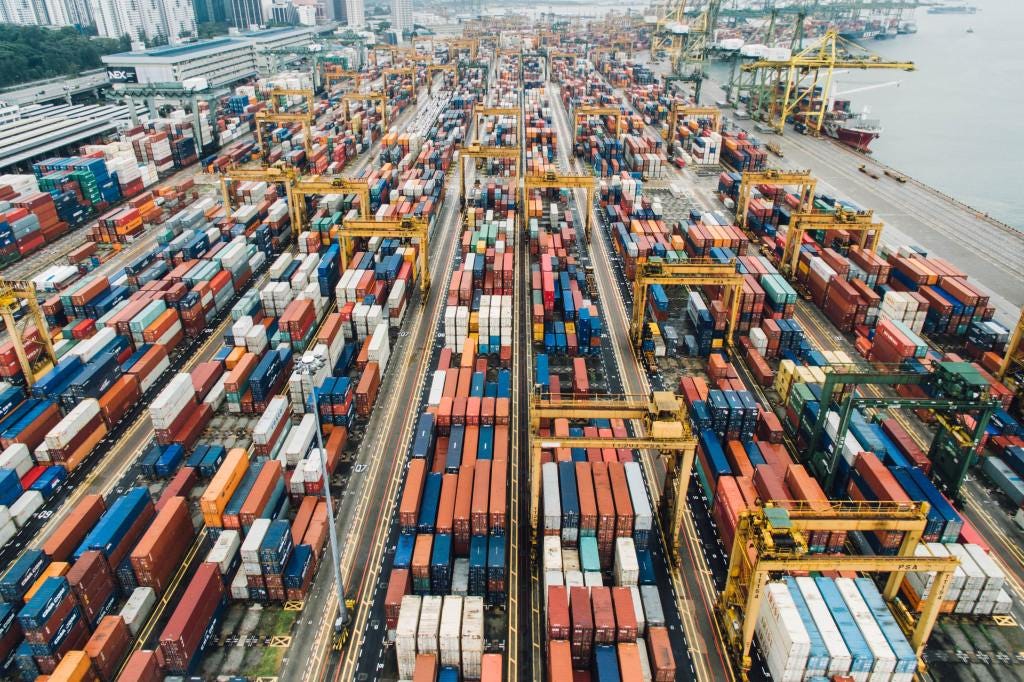Global food crisis is a bigger looming threat than you think
Food insecurity is spreading, taking on more diverse forms, and affecting all regions of the world. Ripple effects are creating political disruption, adding cost and reducing capability to respond.
Imagine you cannot access food for your family.
There is no option for locally available food.
Those options that exist at some distance from where you live are unaffordable and oversubscribed, meaning far too many people need what little is available. Imagine there is no work available to you, and you cannot earn what you are used to, or even to meet basic needs.
You do not have the option of setting aside other expenses to pay more for food, and there is no reliable public agency providing food assistance for assistance with high food costs.
This is the situation facing tens of millions of people around the world, right now, today. Hundreds of millions more face some of this difficulty, including some combination of reduced food availability, a nutrition deficit reinforced by unaffordable costs, and limited public services to assist. In almost all cases, people have little choice but to migrate in search of work, income, and a more stable food security situation.
Since 2022, when Russia invaded Ukraine, dozens of countries have faced extreme cost and supply pressures in terms of imported grain. Though mapping of grain prices shows stabilization through 2023, after the Black Sea Grain Initiative came into effect, several factors make it hard to precisely gauge how food prices are being impacted by ongoing supply stresses related to climate, trade, and conflict.
Since the onset of the COVID-19 pandemic in 2020, much of the world has seen hard-to-manage inflation.
The ramifications of that inflation are still playing out, and few economies have reached a new steady state. (The U.S., which dealt better with inflation than any peer country, has seen major political disruption anyway, in part because inflation affects different segments of the economy differently.)
Food prices stabilizing relative to all other prices does not necessarily mean they have come back in line with what is affordable for most people, as wages stagnate, hiring is uneven, and income has become more unreliable for more people.
Climate pressures are intensifying, rapidly. Nearly all food-exporting regions have faced reduced availability of fresh water and other climate-related barriers to reliable food production.
In 2022, as the ripple effects of Russia’s invasion of Ukraine spread, compounding pandemic disruptions, the World Food Programme reported:
“As many as 828 million people go to bed hungry every night, the number of those facing acute food insecurity has soared — from 135 million to 345 million — since 2019. A total of 50 million people in 45 countries are teetering on the edge of famine.”
At the same time, the 2022 State of Food Security and Nutrition report—issued jointly by the United Nations Food and Agriculture Organization (FAO), the International Fund for Agricultural Development (IFAD), UNICEF, The World Food Programme, and the World Health Organization—warned:
“Around 2.3 billion people in the world were moderately or severely food insecure in 2021, and 11.7 percent of the global population faced food insecurity at severe levels.”
The Global Crisis Response Group—formed to trace and to recommend effective remedies to the worsening polycrisis—reported on an unprecedented multidimensional global cost-of-living crisis. One of its reports outlines a “widespread picture of vulnerability”, in which:
“94 countries, home to around 1.6 billion people, are severely exposed to at least one dimension of the crisis and unable to cope with it. Out of the 1.6 billion, 1.2 billion or three quarters live in ‘perfect-storm’ countries, meaning countries that are severely exposed and vulnerable to all three dimensions of finance, food, and energy, simultaneously.”
The Global Crisis Response Group highlighted shockwave insights, including the fact that most nations are becoming less capable of effectively responding to any of the elements of the polycrisis. For instance:
“60 per cent of workers have lower real incomes than before the pandemic; 60 per cent of the poorest countries are in debt distress or at high risk of it; [and] developing countries miss $1.2 trillion per year to fill the social protection gap…”
The Food System Economics Commission has found that just since April 2016, when the Paris Agreement was signed, more than $136 trillion has been spent, lost, or wasted, just to address the costs of unsustainable food systems. Those costs connect to most areas of human experience, in some way, including lost income, fiscal instability for nations, consumer confidence in wealthy countries, health expenditures, resource depletion, and the disruption of Earth’s climate system.
Each of those numbers—lower incomes, sovereign debt distress, and reduced social protection funding—mean global resilience is reduced. As a result, a greater number of resilience measures will likely fail, and destabilization is more likely—at local, national, and international levels.

Russia’s illegal invasion of Ukraine is not only one of the major contributing factors driving this global food security crisis. The resulting proliferation of hunger, suffering, and destabilization, has led Vladimir Putin to weaponize food supplies—deliberately putting millions of lives at risk, using hunger as a weapon of war to extort concessions. CSIS cites evidence of “an intentional Russian effort to undermine Ukraine’s agricultural capacity”.
A 2022 joint statement on the Global Food Security Crisis from leaders of multilateral institutions highlighted four areas needing both short-term and sustained cooperative effort:
Providing immediate support to the vulnerable;
Facilitating trade and the international supply of food;
Boosting production;
Investing in climate-resilient agriculture.
With more than 2 billion people facing some level of food insecurity, with incomes lower across the world, with supplies of food, fuel, and fertilizer disrupted and costing more, and with 50 million people in 45 countries on the brink of famine, and food prices driving political upheaval in the United States, the global food crisis is turning into an economic, political, and humanitarian superstorm.
Elimination of vital aid programs, cancellation of thousands of grants for life-saving, peacebuilding work, and the dismantling of agencies that deliver critical science insights, are all putting the security of food supplies at risk. These actions also make it more difficult and more expensive to build, upgrade, and maintain vital infrastructure.

Collaborative efforts are vital, like the 4-country “I2U2” effort aimed at helping India to boost global food production. Through this plan, the partners will invest billions of dollars and transfer critical irrigation systems and other technology, to expand India’s capacity.
This is necessary, because the US no longer provides the “idled cropland buffer” it used to shore up global food supplies in the mid 20th century. Severe drought also suggest harvests will decline in the US and other key exporting countries, further stressing global supplies.
The Good Food Finance Network is working to establish a Co-Investment Platform to catalyze finance for food systems transformation across the public, private, and multilateral sectors. The Platform will address challenges such as:
Shifting to climate-smart production;
Improving rural livelihoods and nutrition outcomes;
Making urban food consumption healthier and more sustainable;
Slashing food waste and loss.
This is needed, not only as a response to the crisis outlined above, but because mainstream incentives for food-related investment and trade are not aligned with the goal of avoiding this kind of shock in the future. We need transformational vision, action, funding, and collaboration, to come through the superstorm better positioned to meet human needs sustainably.









